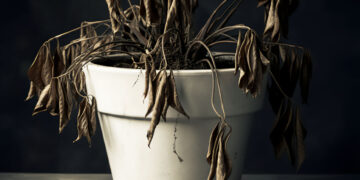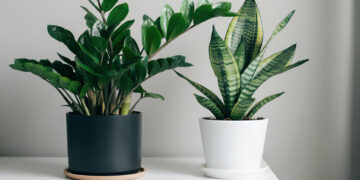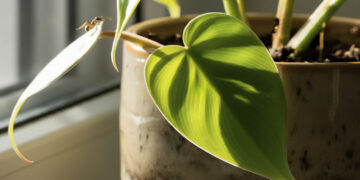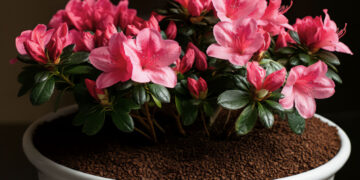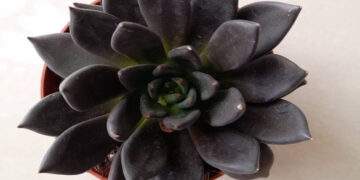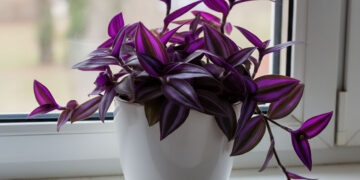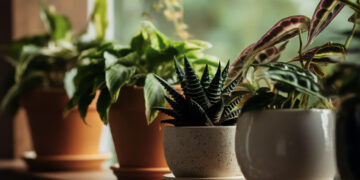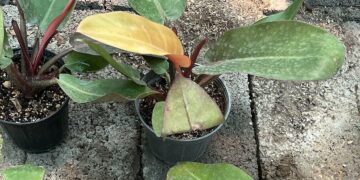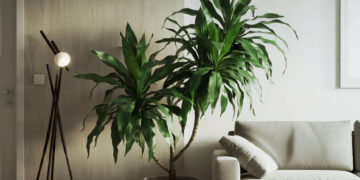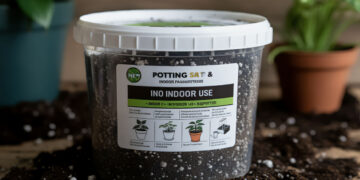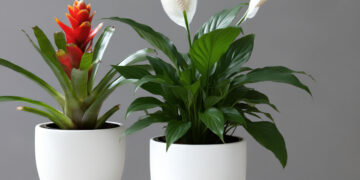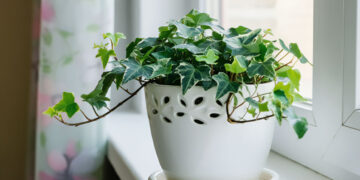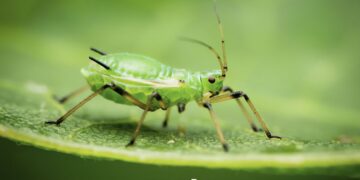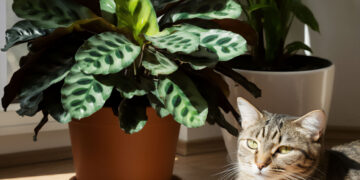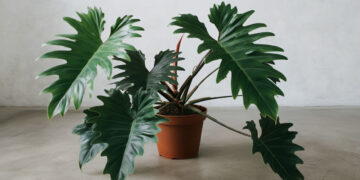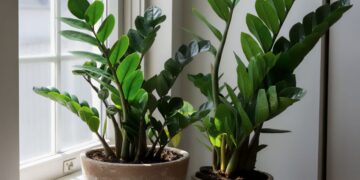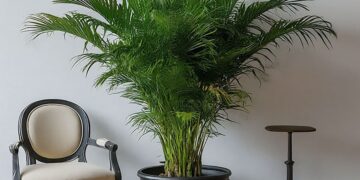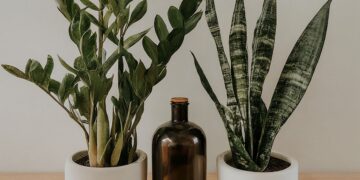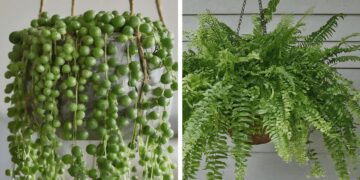You should know that in general, the consumption of all houseplants by your dog or cat can cause gastrointestinal issues and vomiting. However, some houseplants are considered dog- or cat-friendly, meaning they pose less risk and are not life-threatening.
Pet interest in houseplants
Both cats and dogs like houseplants, but their behaviors are different.
When a cat is bored and doesn’t have a toy to chew on, it will reach for a houseplant if available.
When dogs are teething, they are lazy or playfully attracted to houseplants.
Dogs get poisoned more because they are usually more curious and chew more of the houseplant.
Common toxic houseplants for cats and dogs
Contrary to their lovely appearance, houseplants can be dangerous for your pets.
Lilies, poinsettias, and philodendrons are poisonous; you should keep them away from cats. For example, if your cat eats even a tiny amount of lilies, it will suffer from acute kidney failure. It’s surprising that some people label lilies as non-toxic to pets.
Tip: These are just a few examples of houseplants toxic to pets, with many more to be aware of.
Signs of eating a toxic houseplant for cats and dogs
Poisonous houseplants can have variable symptoms in cats and dogs. Sometimes, only you notice mild irritations, and sometimes, it causes severe diseases and even death.
If your cat is weak, drooling, has diarrhea, vomits and has difficulty breathing, it must have eaten a dangerous houseplant.
In dogs, the symptoms are different. Your dog suffers from vomiting, diarrhea, drooling, abdominal pain, and, in severe cases, cardiac arrhythmia or liver failure.
Tip: If you see any symptoms, go to the vet immediately.
Keeping cats and dogs safe from houseplants
– It is better to put the toxic houseplant on high shelves or hanging pots so it is out of reach. Obviously, you can use physical barriers, such as decorative fences or netting around the plant bases.
– There are safe pet deterrent sprays with an unpleasant smell that will prevent your dog or cat from coming close to poisonous houseplants.
– Entertain dogs with chew toys and cats with cat grass or catnip.
– Take training seriously. When your pet gets close to the dangerous houseplant, keep it away with commands like “Leave it” and reward it. This will teach your pet to keep its distance from the toxic houseplant.
– In the end, if you provide an attractive place for pets that reduces their weakness and curiosity, they will be less attracted to houseplants.
In the following section, I will discuss some safe houseplants for cats, dogs, birds, and humans.
1. Spider Plant (Chlorophytum comosum)
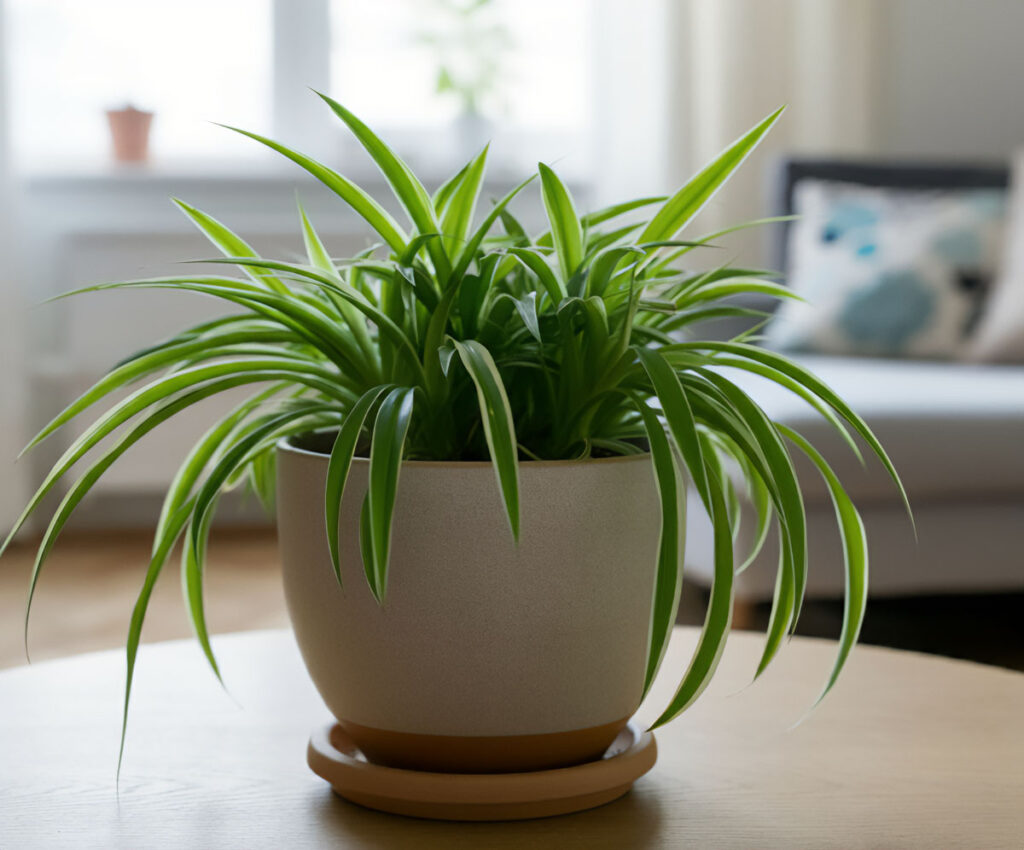
This famous houseplant has long and curved green leaves with white stripes. Small white flowers and baby plants on their long stems attract everyone’s attention.
Notable Reason
I have good news for you: The beautiful spider plant cleans the air in the house and is nontoxic for cats and dogs. This houseplant is one of the air purifier houseplants that removes formaldehyde and xylene.
2. Boston Fern (Nephrolepis exaltata)
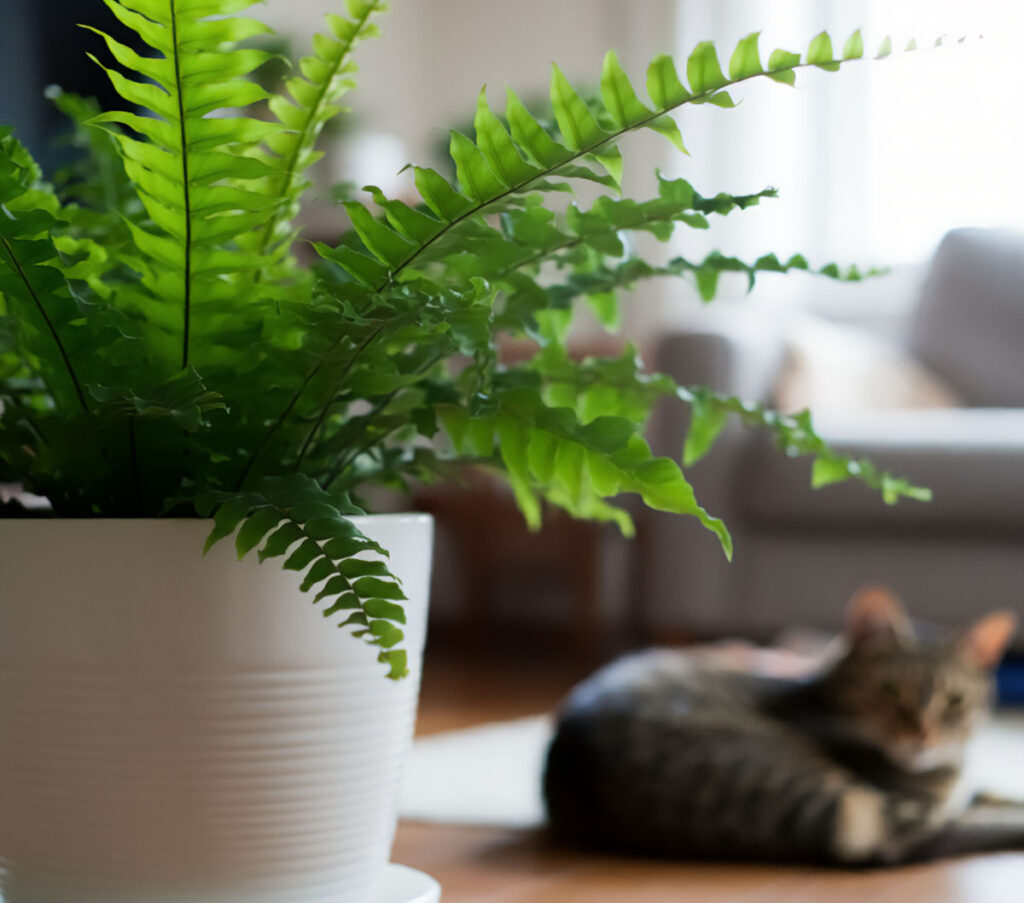
Boston Fern is the best houseplant for bathroom or kitchen. Its lush, arching feather-like leaves grow well in high humidity and indirect light.
Notable Reason
This nontoxic houseplant is helpful for human health. It considerably increases the house’s humidity and reduces the dryness, so we breathe much better.
3. African Violet (Saintpaulia)
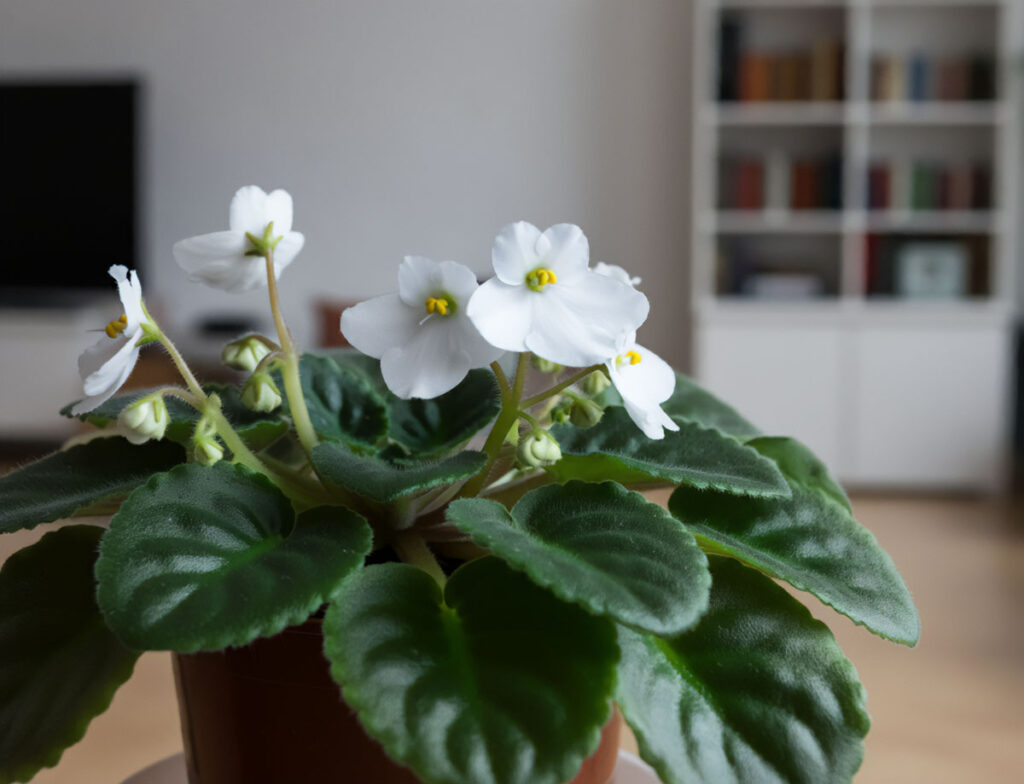
Preparing bright, indirect light and constant humidity is enough for this colorful houseplant to enjoy the beauty of velvety leaves and clusters of small, vibrant flowers.
Notable Reason
This houseplant is easy to care for and grows in the temperature range of most houses. After seeing its beauty and hearing its unique features, everyone is tempted to have one at home. In my opinion, it looks great in a small space.
4. Peperomia (Peperomia spp.)
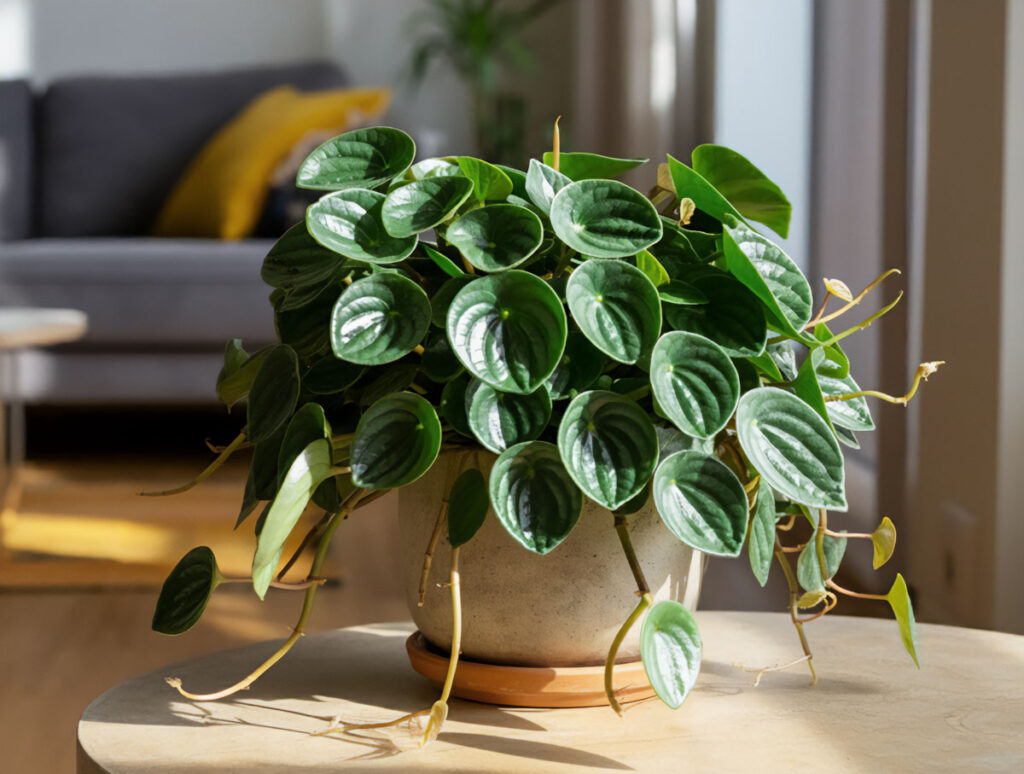
The shape and color of Pepromia leaves are so diverse that you usually don’t know which one to buy for your home. Remember, this small houseplant with thick and fleshy leaves will grow well with direct light and minimal watering.
Notable Reason
This safe houseplant livens up your shelves or tables without taking up too much space. In addition, it is low-maintenance houseplant and also hardy houseplant against drought.
5. Friendship Plant (Pilea involucrata)
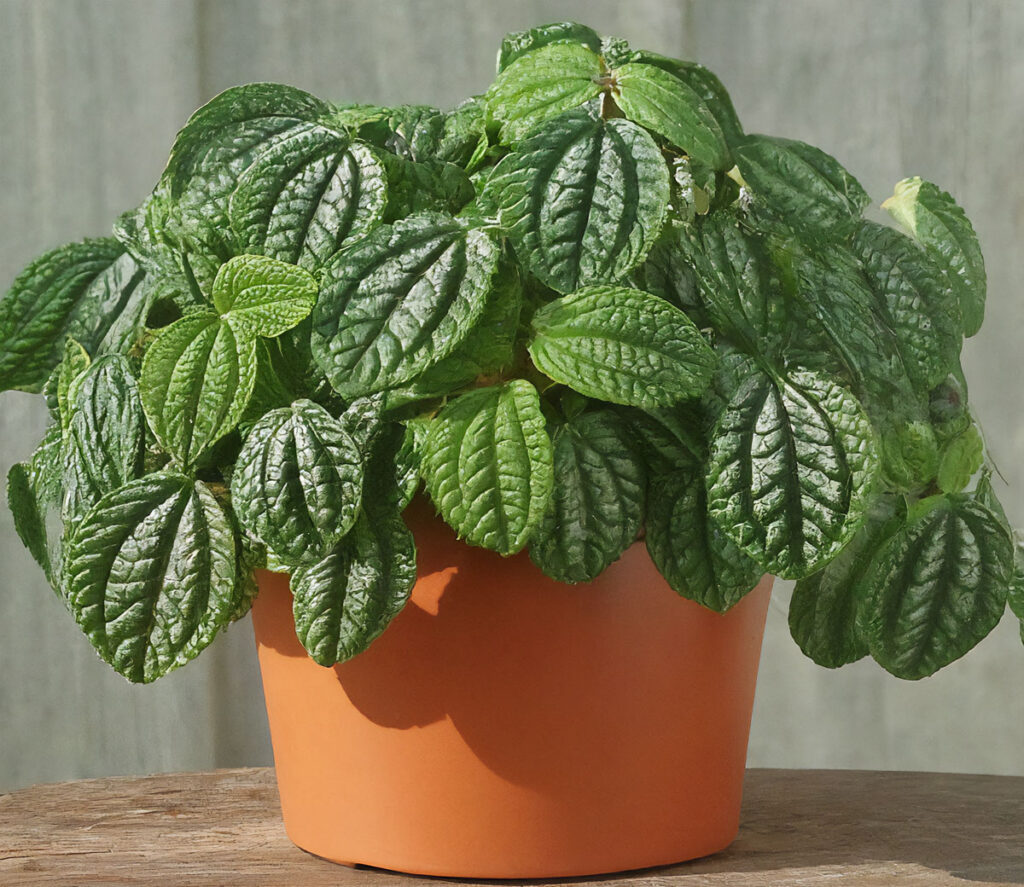
The striking leaves, with a quilt-like texture, distinguish them from other houseplants. Remember moderate light and humidity if you choose it for your home or office.
Notable Reason
Everyone asks me why this houseplant is called a friendship plant. In fact, the answer goes back to the tradition of sharing cuttings with friends. By giving cuttings, you can propagate it quickly and share a little bit of nature with your loved ones.
6. Moth Orchid (Phalaenopsis orchid)
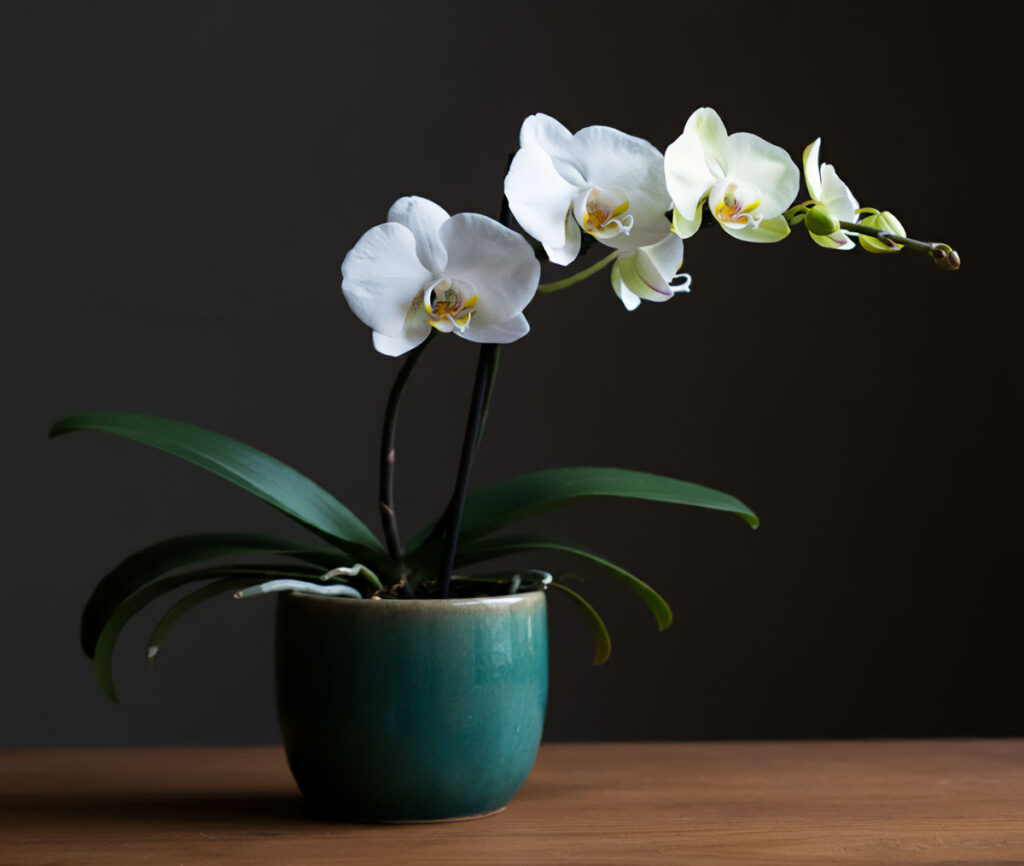
This blooming houseplant has a long life and is known for its delicate and colorful flowers. It also likes bright, indirect light and humid situations.
Notable Reason
What has increased the popularity of moth orchids among houseplant growers compared to other orchids is that everyone can grow them at home with minimal difficulty. The blooms last for several months and are long-lastingly beautiful.
7. Burro’s Tail (Sedum morganianum)
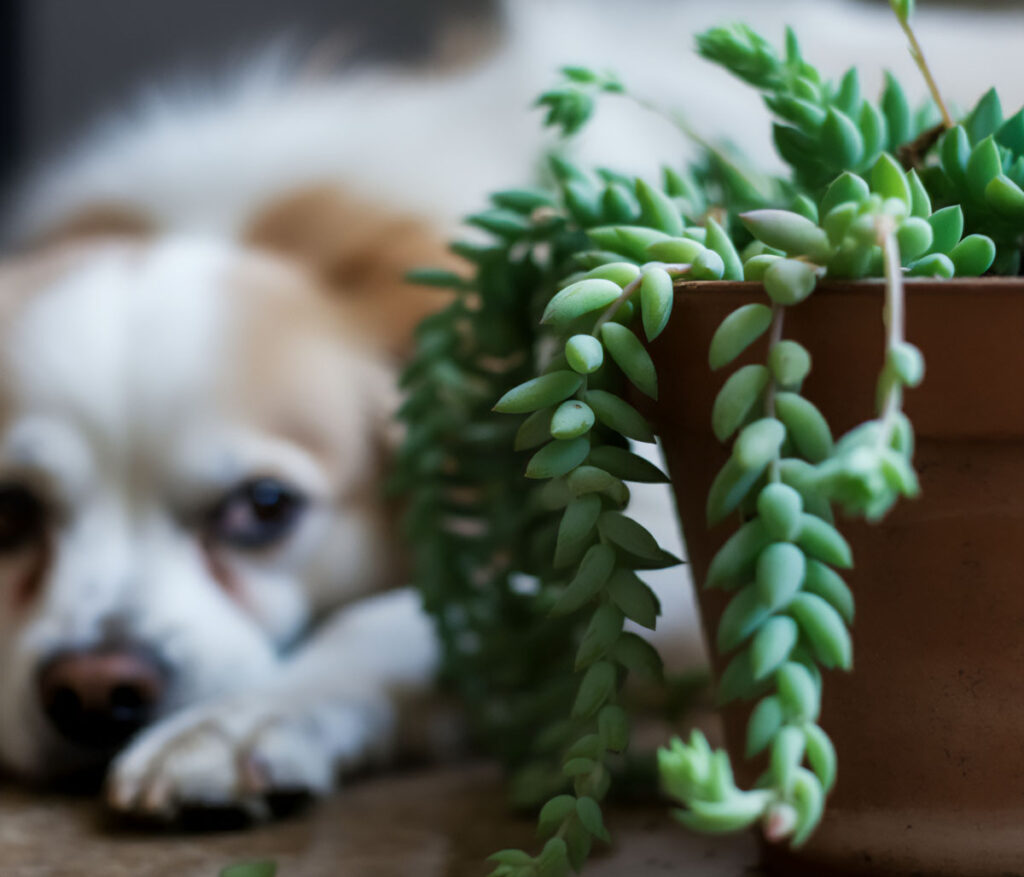
This indoor plant is a type of succulent whose long, trailing stems are covered with fleshy, blue-green leaves. I put it in bright light and give it a little water.
Notable Reason
This pet-friendly houseplant is low maintenance and can survive in dry conditions. Moreover, its cascading growth habit suggests growing it in hanging baskets.
8. Christmas Cactus (Schlumbergera spp.)
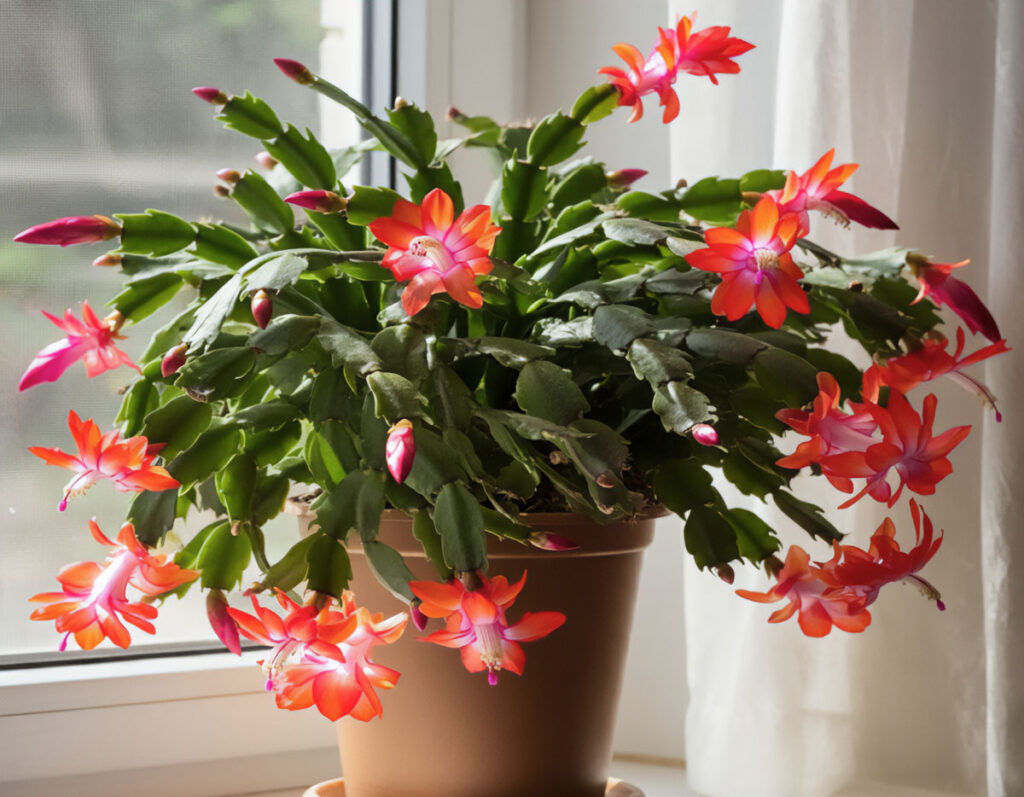
With bright, indirect light and regular watering, you can help Christmas Cactus’s segmented, flattened stems grow well.
Notable Reason
When all the houseplants are sleeping in the cold months, this safe houseplant gives us colorful tubular flowers as a Christmas gift.
9. Swedish Ivy (Plectranthus verticillatus)
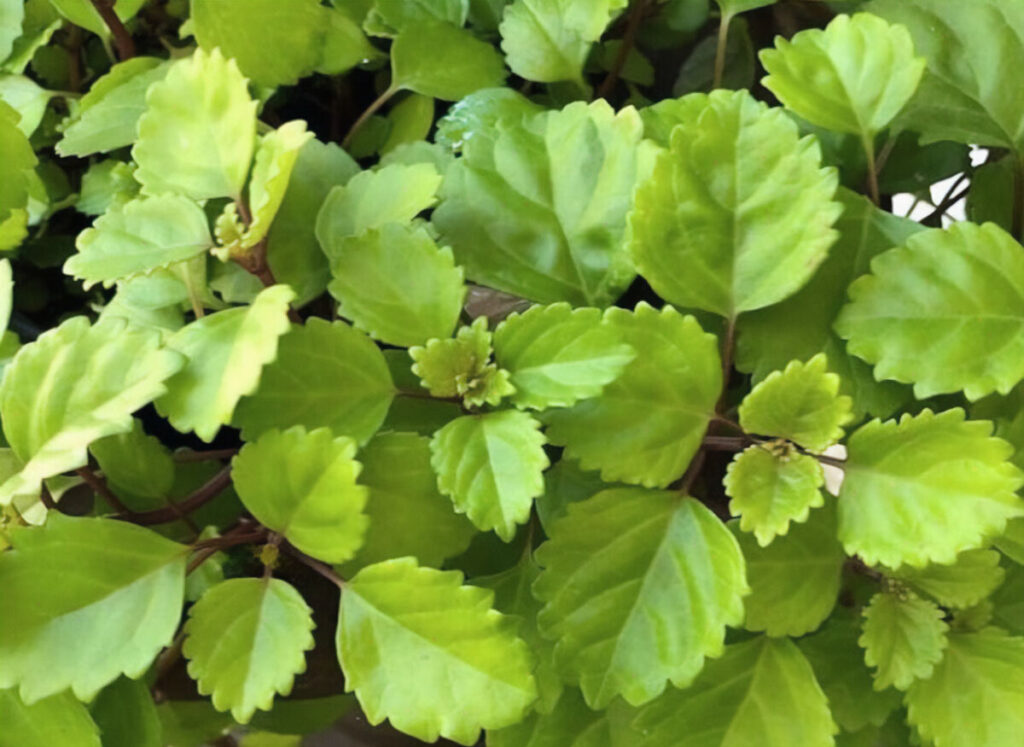
Swedish ivy with glossy, scalloped leaves and trailing stems requires moderate light and regular watering.
Notable Reason
It is very resistant and does not need much care, and because its cascading growth, it falls into the category of hanging houseplants.
10. Prayer Plant (Maranta leuconeura)
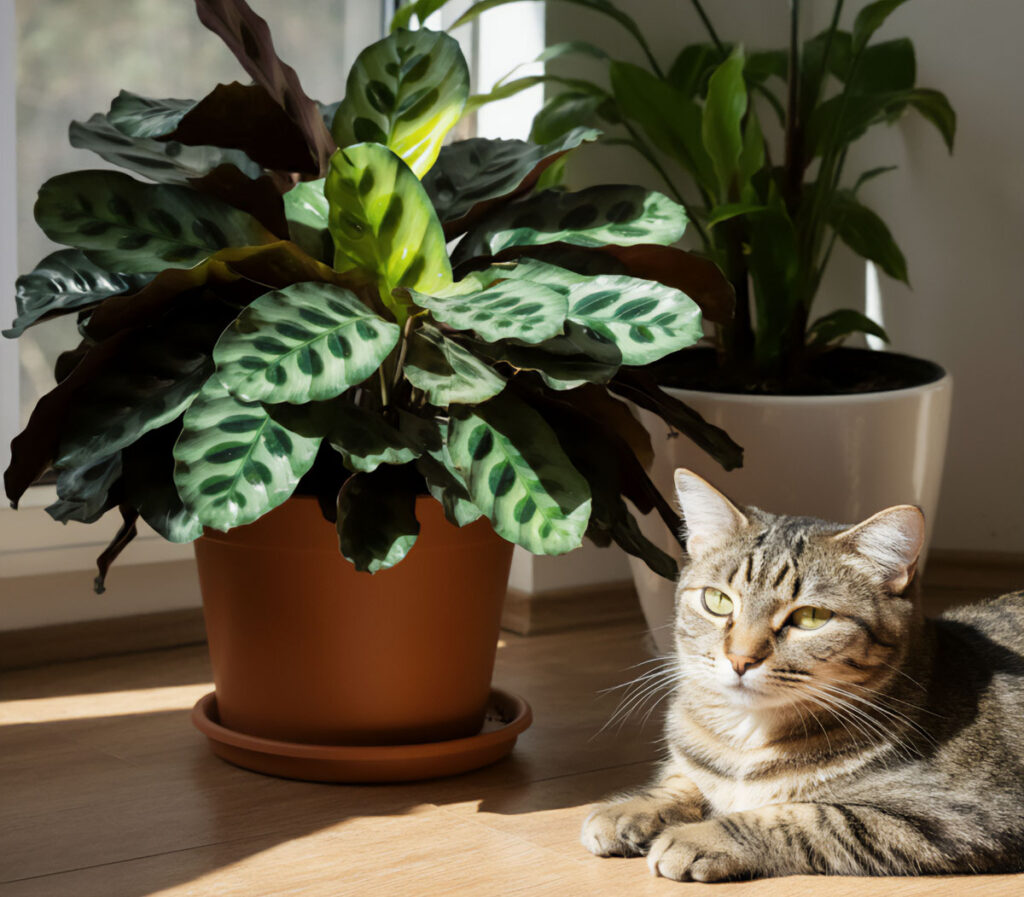
It may seem strange, but its prominent and patterned leaves fold at night and look like praying hands. Additionally, low to medium light and high humidity help this nontoxic houseplant grow.
Notable Reason
I think this night folding is magical, and we all like to see and enjoy it. This houseplant is ideal for keeping in different indoor environments because it is a low-light houseplant and adapts to any light level.
11. Basil (Ocimum basilicum)
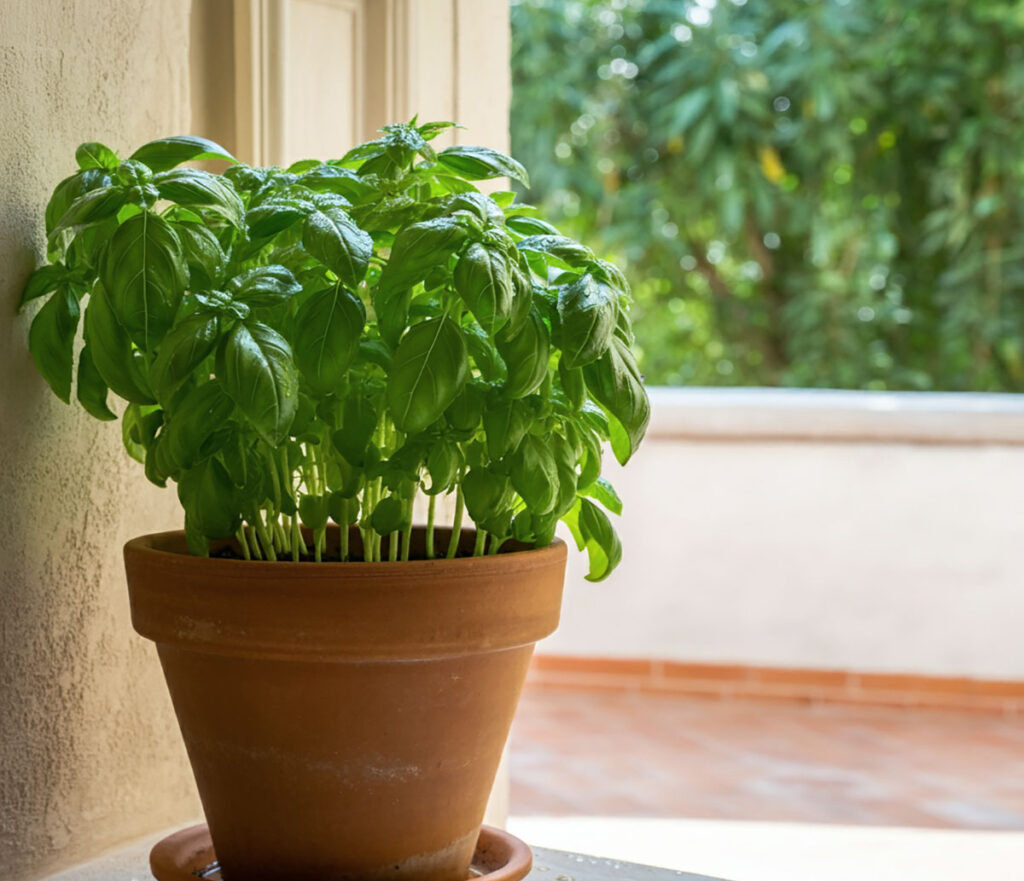
This cooking herb has fragrant and bright green leaves and prefers a lot of sunlight and regular watering houseplant.
Notable Reason
This versatile plant is very practical and used in many dishes. Its special smell chases away insects, and it is not dangerous for pets.
You will remember me the next time you see a basil on your pizza.
12. Snapdragon (Antirrhinum spp.)
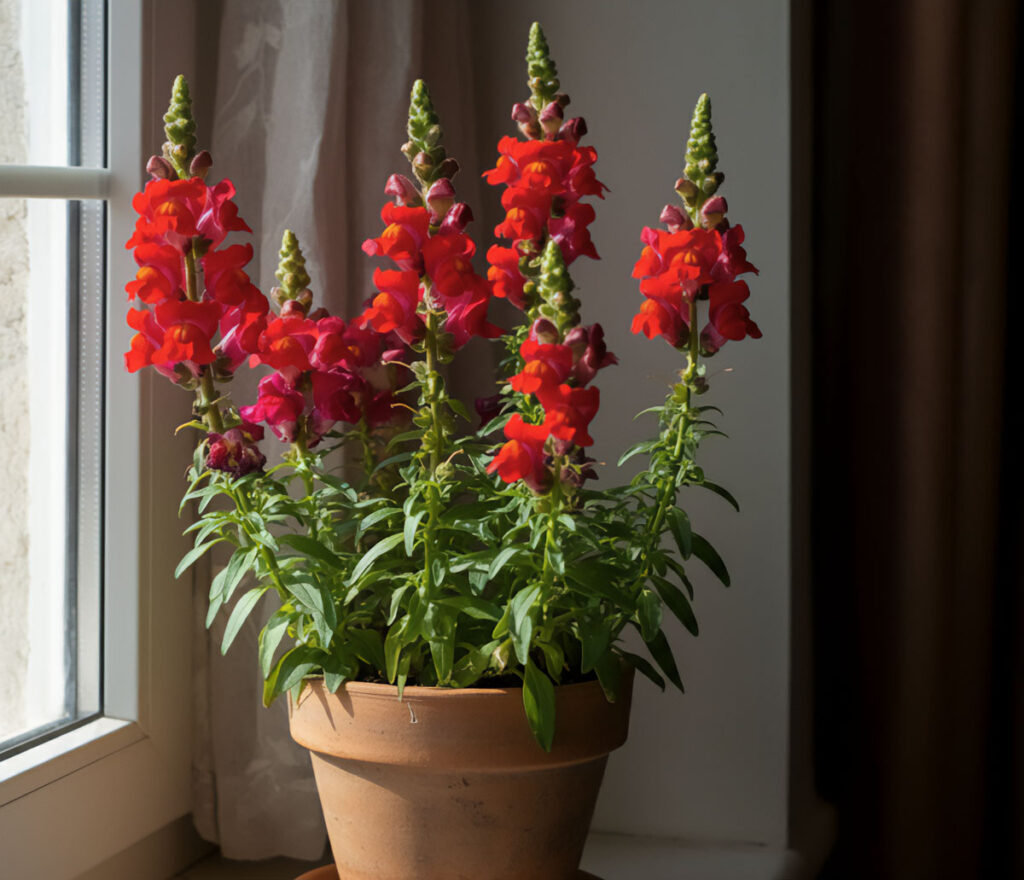
This plant has colorful and tubular flowers that remind me of a dragon’s mouth. If you want your plant to grow best, place it in bright light.
Notable Reason
Pollinating Snapdragon plant flowers, bees, and butterflies suit indoor and outdoor gardens and support local wildlife.
Tip: Although this plant is nontoxic, if your cat eats a large amount, it may cause mild discomfort to the digestive system.
13. Zebra Plant (Aphelandra squarrosa)
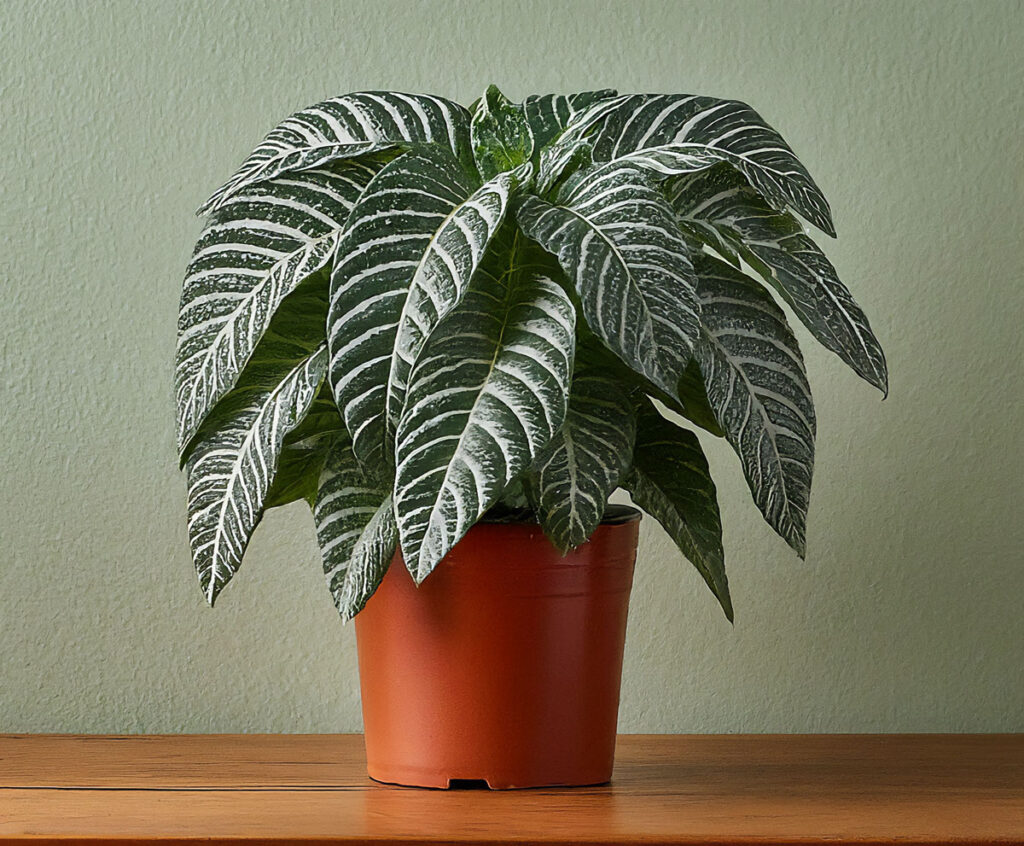
Impressive dark green leaves with bold white veins make this plant look beautiful. If the conditions are ideal, it may produce bright yellow flower bracts.
Notable Reason
I use this plant, which has beautiful foliage, in interior design. Because it loves high humidity, I place it in humid places.
Tip: Normally, it does not poison your cat, but if it is consumed too much, it will cause a slight stomach ache.
If you have any questions about pet-friendly houseplants, feel free to ask in the comments section.
sources:
